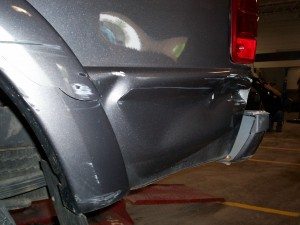I just read an article that I believe is worth writing about. I will provide the link to the full article at the end of the post. I encourage you to take a few minutes to read it. I am going to high light a few points of the article.
It is about a young boy with a rough childhood. His mother was on drugs, moving from home to home and even lived in a car for a period of time. Later the young child and his younger brother were taken from the mother and placed in foster care. Being a violent child, he was sent from foster home to foster home. The story goes into detail of how he ended up homeless on the streets. However, I am going to jump to the point that I would like to make.
Never Give Up
This young man is now doing something that he thought he’d never do. That is going to college. He is enrolled in a auto body and paint program. He mentions that the thought of going to college. In fact, the thought of it was not even attractive to him at first with all of the responsibility and having to get up early. However, he has adapted well and really likes working on cars. The story is not over yet. This is not a big success story, as he still has a long journey in front of him. As many of us know, even being successful with a decent job can be a struggle at times. Dealing with employees, customers, and all of the day to day complications that come with life. The more things a person have (house, car, toys, job, family, etc.) the more stress the are going to have. Life itself can be a challenge sometimes. I am not to be depressing, but to make a point that you should never give up. Give that extra effort to be in class on time, make that “A”, to get the job you want, and to do your best, even on days when you don’t feel like it. That is what is going to achieve the true success you desire in your career.
Make It Happen
So where are you heading. Have you completed high school? If you have, are you sitting around waiting for things to happen or fall into place? Well, chances are that it’s not going to happen. You may still be waiting in a year, five years, or even ten years with the exact same circumstance that you are today. I’m not trying to make anyone feel bad or upset, but if you want something, go get it. No one is going to do it for you. You have to be the one to make it happen. You may get help and support along the way, but you have to make the final decision to pursue a successful career.
What Career Pathway Should I Choose?
I teach and promote auto collision repair. However, I do not encourage this career pathway if you are not interested in it. There are too many careers out there to settle for one that is not a fit for you. My advice is to think about what your interests and passions and find a career to fit it. If you don’t know where t start go to your local college and speak to an advisor. Ask them for resources to help you select a career pathway. There are even test that you can take that will help guide you in the right direction. Finding a career is easy, it’s making the decision to make it happen that is hard.
Regardless of past or present things going on in your life (like Mike in the story), you have the ability to change and improve it. Be sure to read the Full Story About Mike
It’s a new year and new school semester is about to begin. Do you want a new start…..go get it!
If you have any question about a career in collision repair, feel free to comment or ask on tis post. I will do my best to help answer your questions.

